Are you considering getting a German Shepherd? It’s important to understand that not all German Shepherds are created equal. There are actually five different types of this popular breed, each with its own unique characteristics and purposes. These types include the Czech GSD, which is commonly used as a military dog due to its exceptional training and discipline. Additionally, there are working line GSDs that excel in tasks such as search and rescue, law enforcement, and personal protection. And for those interested in dog shows, there are also GSDs bred specifically for confirmation events.
Firstly, there are the show line German Shepherds, which are a popular gsd breed variation and make great family pets. Then there are working line German Shepherds, which were originally used as herding dogs but now serve as police or guard dogs. Another breed variation is the DDR Shepherd, which originated in East Germany (Deutsches Demokratische Republik) and is known for its loyalty and strength. The next type is the Czech Shepherd, which has a high drive and excels in sports like agility and obedience training. Finally, there are the American-bred German Shepherds, which have been bred for their size and make excellent service dogs. If you’re interested in owning a gsd, be sure to research each stud carefully to find the perfect match for you.
Understanding these different types of German Shepherds, including Czech GSD and working line GSD, can help potential owners choose the right one for their lifestyle and needs. While some may prefer to show dogs that excel in dog shows, others may opt for the more active and versatile working line GSDs. But before we dive into each type in more detail, let’s take a quick look at the historical background of this amazing breed.
Different Types of German Shepherd Dogs with Pictures
German Shepherds are one of the most popular dog breeds in the world. They are known for their intelligence, loyalty, and versatility. However, not many people know that there are different types of German Shepherds, including show dogs, good pets, working line GSDs, and studs.
The visual representation and comparison of each type
The five types of German Shepherds are:
- American show line
- West show line
- East working line
- Czech working line
- DDR (East German) working line
Each dog breed has distinct physical characteristics that set them apart from one another. Here is a visual representation and comparison of breed variations for each dog breed. If you’re interested in breeding your dog, you may want to consider finding a stud that matches the topic of your interest.


As you can see from the picture, German Shepherd characteristics are evident in American show line dogs with their sloping back and angled hind leg. Czech Shepherds, also known as GSDs, have a stud-like appearance with a more level back and straighter hind legs than American show lines but still have a sloping croup. East working lines also exhibit German Shepherd characteristics with a straighter back than both show lines but still slope slightly towards the rear end; they tend to be less bulky than their counterparts due to selective breeding for athleticism rather than appearance.
Czech working lines of the German Shepherd type have an even straighter back than East working lines of the same breed and tend to be more compact in size, making them ideal for police work or search-and-rescue operations where agility is key. If you’re looking for a stud of the German Shepherd breed, consider Czech working lines for their exceptional physical traits.
Finally, DDR (East German) working lines of GSD (German Shepherd) has the most pronounced straight backs with no slope whatsoever; they are also typically larger-framed dogs with powerful jaws and high drive. The same is true for Czech Shepherds, which are a type of shepherd breed that can be used as a stud.
Explanation of how to identify each type
Identifying each type requires some knowledge about breed standards as well as careful observation skills. It is important to be familiar with the German shepherd characteristics when identifying a German shepherd dog. This is especially true for those who are looking for west german working line German shepherds or working line GSDs.
American Show Line dogs, including German Shepherd characteristics, usually weigh between 50-90 pounds and have a height of 22-26 inches at the shoulder. They have a sloping back, with an angled hind leg, and tend to be larger in size than other types. DDR Shepherds, also known as East German working dogs, are often associated with these traits.
West Show Line dogs, known for their German Shepherd characteristics, are usually taller than American show lines, weighing between 65-90 pounds and standing at a height of 24-28 inches at the shoulder. They have a level back, with straighter hind legs than American show lines but still slope slightly towards the rear end. These dogs are often referred to as East German working dogs due to their impressive work ethic and intelligence.
German Shepherd East Working Line dogs weigh between 55-75 pounds and stand at a height of 24-26 inches at the shoulder. They have a straighter back than both show lines but still slope slightly towards the rear end; they also tend to be less bulky than their counterparts due to selective breeding for athleticism rather than appearance.
Czech working line German Shepherds are smaller in size, weighing between 44-66 pounds and standing at a height of 22-26 inches at the shoulder. They have an even straighter back than East working lines and tend to be more compact in size, making them ideal for police work or search-and-rescue operations where agility is key.
East German DDR Working Line: Characteristics and Traits
The East German DDR working line is one of the five types of German Shepherds. This particular type originated in the former East Germany, also known as Deutsche Demokratische Republik (DDR), during the Cold War era. The breeding program for this line was focused on producing dogs that were strong, agile, and had a high work drive.
Origin and History Behind East German DDR Working Line
The breeding program for the East German DDR working line began in the 1940s when the Soviet Union occupied East Germany. The goal was to create a shepherd dog that could be used by border guards, military personnel, and law enforcement agencies. The breeding program was highly selective, and only shepherd dogs with superior traits were allowed to breed.
During this period, there were strict regulations imposed on shepherd dog breeding in East Germany. Breeders had to follow strict guidelines set by the government, which included mandatory health checks for all shepherd dogs before they were allowed to breed. Only shepherd dogs with excellent temperaments and strong work ethics were selected for breeding.
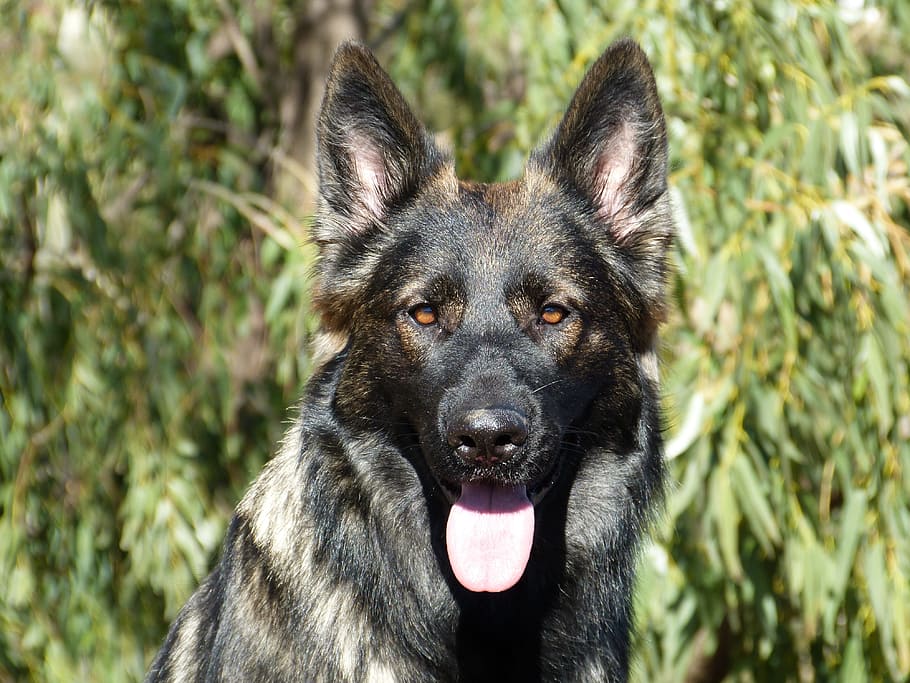

Physical Characteristics
East German DDR working line dogs are larger than other types of German Shepherds, typically weighing between 75 to 95 pounds and standing at around 24 to 26 inches tall at their shoulder blades. They have a muscular build with a straight backline compared to other lines that may have a sloping backline.
Their coat colour ranges from black or dark sable to bi-colour or solid grey. German Shepherd Dogs, including Show Line Shepherds, East German Working Line, and West German Working Line, have a dense undercoat that provides insulation in cold weather conditions.
Personality Traits
East German DDR working line shepherd dogs have a reputation for being highly trainable due to their strong work drive and excellent focus. They are intelligent shepherd dogs that can learn complex tasks quickly but require consistent training throughout their lives.
They are loyal and protective of their families but can be reserved around strangers until properly introduced by their owners. German Shepherd dogs, including show line Shepherds, German working lines, and West German show lines, are also known to have a high energy level and require regular exercise and mental stimulation to keep them happy and healthy.
Von Grafrath
Von Grafrath is one of the most famous kennels that produced East German DDR working line shepherd dogs. This kennel was founded in 1956 by Walter Ziemer, a former police officer who had an interest in shepherd dog breeding. The kennel was located in the town of Grafrath, near Munich, Germany.
The German Shepherds bred at Von Grafrath, known for their exceptional German working line, were highly sought after by law enforcement agencies and military personnel around the world due to their superior traits. These dogs were known for their strong work ethic, excellent temperament, and ability to perform complex tasks.
Sable German Shepherd: Rarity and Beauty
If you’re looking for a unique and beautiful dog breed, the sable German Shepherd might be just what you need. This type of German Shepherd is known for its rare colouring and striking appearance, making it a popular choice among pet owners and breeders alike.
Definition and explanation of sable colouring
Sable colouring refers to a coat that has different shades of brown or tan, with black tips on each hair strand. The result is a stunning blend of colours that can range from light tan to dark brown, often resembling the colouration of wild wolves. This colouring is commonly found in German Shepherds, particularly those from German working lines.
Unlike other types of German Shepherds that have solid-coloured coats, sable GSDs have a distinct pattern that sets them apart from the rest. Their fur can also appear longer than other breeds due to the black tips on each strand.
Rarity compared to other coat colours.
While traditional black-and-tan or all-black German Shepherds are more common, sable GSDs are considered quite rare. This makes them highly sought-after by those who want a unique-looking pet or service dog.
Because they are less common than other types of German Shepherd Dogs, sables can also be more expensive. It’s important to find a reputable breeder if you’re interested in owning a German Working Line GSD to ensure you get a healthy pup at a fair price.
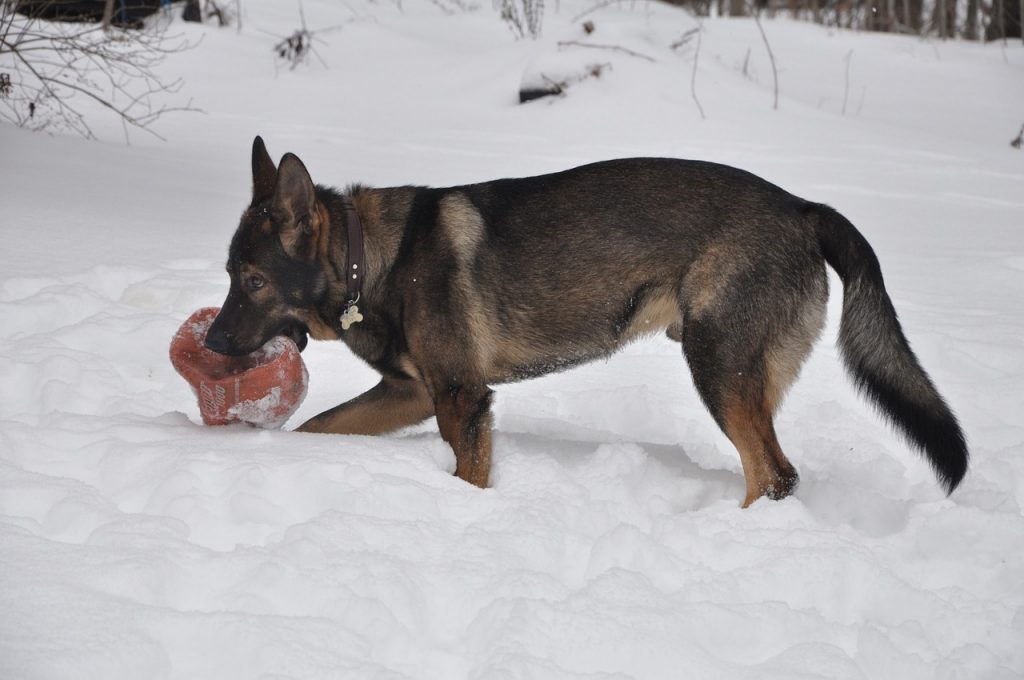

Unique beauty in sable-coloured German Shepherds
The beauty of sable-coloured German Shepherds lies not only in their rarity but also in their unique appearance. Their striking coats make them stand out in any setting, whether they’re working as service dogs or simply lounging at home as family pets.
German Shepherds can also come in different variations of sables, such as agouti/silver sables which have lighter undercoats with darker outer layers or red/black, which has reddish-brown undercoats with black tips on top layer hair strands.
Their German Shepherd hair is also unique, with each strand having a black tip that gives them a distinct look. This feature makes German Shepherds stand out from other breeds and adds to their overall beauty.
Owning a sable German Shepherd
While sable German Shepherds are good pets and family pets, owning one comes with its own set of pros and cons. Here are some things to consider before bringing home a sable GSD:
Pros
- Unique appearance: German Shepherds are also known for their striking coats and are a popular breed. Sables, however, are rare and have a distinct look that sets them apart from other breeds.
- Good service dogs: German Shepherds are intelligent, loyal, and have a strong work ethic, making them excellent candidates for service dog training.
- Plenty of reputable German Shepherd breeders: While they may be rarer than other breeds, there are still plenty of reputable breeders who specialize in sables.
Cons
- Health issues: Like all German Shepherds, sables can be prone to certain health issues such as hip dysplasia or degenerative myelopathy.
- Price: Due to their rarity, sable GSDs can be more expensive than other types of German Shepherds.
Panda German Shepherd: A Unique Variation
German Shepherds are a popular breed of dog known for their intelligence, loyalty, and versatility. They have been used as police dogs, search and rescue dogs, and as pets. However, not many people know about the unique variation of the breed called the Panda German Shepherd.
Description and Origin Story Behind Panda Coloring
Panda German Shepherds are named after their distinctive black-and-white coat pattern that resembles a panda bear. This colouring is caused by a recessive gene that affects the production of pigment in the dog’s fur. The white areas on a Panda German Shepherd’s coat are caused by the lack of pigment cells in those areas.
The origin story behind this variation is unclear. Some believe it was first seen in Germany during World War II when American soldiers brought back a black-and-white shepherd from Europe. Others believe it was created through selective breeding between black-and-tan shepherds to create this unique colouring.
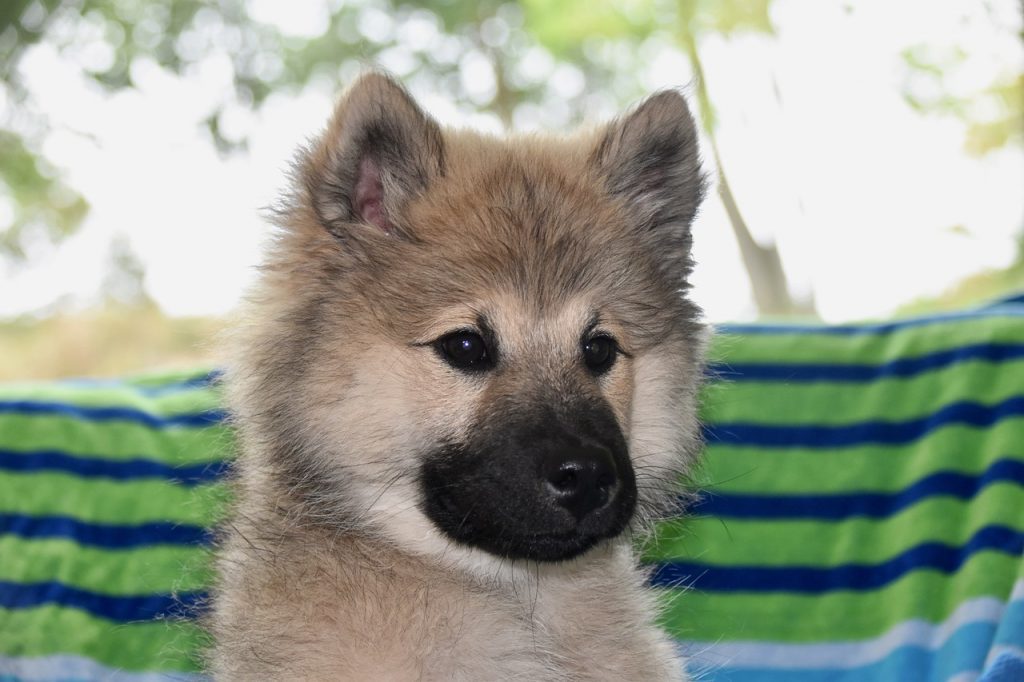

Differences Between Panda and Traditional Black-and-Tan Coloring
The most obvious difference between Panda German Shepherds and traditional black-and-tan shepherds is their coat colouration. Pandas have more white on their coats than traditional shepherds, which can make them stand out more in a crowd.
Another difference is that pandas tend to have softer fur than traditional shepherds due to the reduced amount of pigment cells in their skin. They may also be smaller in size compared to traditional shepherds due to being bred selectively for this trait.
Controversy Surrounding Breeding Practices for Pandas
Breeding practices for Panda German Shepherds have been controversial due to concerns over health issues associated with selective breeding for certain traits. Some breeders may focus too much on creating pandas without considering potential hip or other joint problems that can arise from such breeding practices.
It’s important for anyone looking to adopt or purchase a Panda German Shepherd to do their research and find a reputable breeder who prioritizes the health and well-being of their dogs.
Solid Color German Shepherd Dog: Coat Variations and Colors
German Shepherds are one of the most popular dog breeds in the world, thanks to their intelligence, loyalty, and versatility. They are known for their double-coat fur that comes in various colours and patterns. One of these variations is the solid-colour German Shepherd, which has become increasingly popular among breeders and dog enthusiasts.
What are Solid Color German Shepherds?
Solid colour German Shepherds have a coat with a single colour throughout their body. This means that they do not have any markings or patterns on their fur. The most common solid colours are black, white, blue, liver, sable, and grey.
Coat Variations
Solid colour German Shepherds come in different coat variations depending on the colour of their fur. Here are some examples:
- White: This variation is rare but highly sought after by breeders. White German Shepherds have pure white fur without any markings or patterns.
- Blue: Blue German Shepherds have a bluish-grey coat that can range from light to dark shades.
- Liver: Liver-colored German Shepherds have a reddish-brown coat that looks like liver or chocolate.
- Sable: Sable-colored German Shepherds have a brownish-tan base with black tips on their fur.
- Gray: Gray-colored German Shepherds have a greyish-blue coat that can range from light to dark shades.
Comparison with Traditional Black-and-Tan Coloring
Solid colour variations differ from traditional black-and-tan German Shepherd colouring in many ways. While black-and-tan German Shepherds have a distinct pattern of black saddle-like markings on their backs and tan colouring on other parts of their bodies, such as legs and chest; solid coloured German Shepherds lack this pattern altogether.
Moreover, solid-coloured GSDs tend to be more uniform in appearance than traditional black-and-tan GSDs, as they do not have any contrasting colours on their coat. However, both types of German Shepherds are equally intelligent, loyal and trainable.
Popularity among Breeders
Solid colour German Shepherds have become increasingly popular among breeders in recent years. This is because breeders can produce puppies with specific coat colours that are highly sought after by dog enthusiasts.
For example, white German Shepherds are rare and highly prized for their unique colouring. Blue German Shepherds also have a distinctive appearance that sets them apart from other variations. Liver-coloured GSDs are relatively uncommon and therefore considered to be exclusive.
Saddle Back German Shepherd Dog: Appearance and Personality
If you’re looking for a unique German Shepherd, you might want to consider the saddleback pattern. This pattern is one of the five types of German Shepherds, and it’s known for its distinct markings on their backs.
Definition of Saddle Back Pattern
The saddleback pattern is characterized by a dark patch or “saddle” on the dog’s back that extends from the neck to the tail. The colour of this patch can be black, brown, or grey, while the rest of their body is usually tan or cream-coloured. This distinctive marking gives them a unique appearance compared to other German Shepherds.
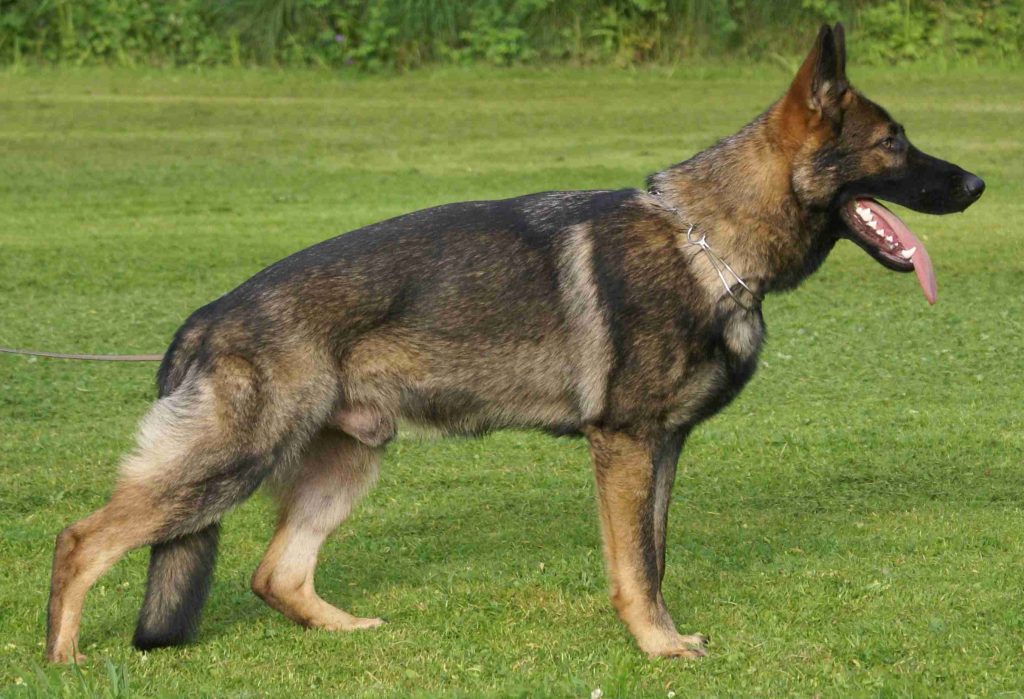

Physical Characteristics
Aside from their saddleback pattern, German Shepherds have some notable physical characteristics that set them apart from other breeds. Here are some things to look out for:
- Size: Saddleback German Shepherds are medium to large-sized dogs.
- German Shepherds have a thick double coat that sheds heavily twice a year.
- Ears: Their ears stand upright and are pointed.
- Muscles: These dogs are muscular and athletic-looking.
Distinct Markings
One of the most defining features of saddleback German Shepherds is their distinct markings. Along with their saddle-shaped marking on their backs, they usually have darker fur around their face and legs as well as underbelly. These markings give them an imposing look that makes them great watchdogs.
Personality Traits
Saddleback German Shepherds are known for being intelligent and loyal dogs. They make excellent family pets due to their protective nature towards children and loved ones. However, they also require proper training because they can become overprotective if not socialized properly.
Like all purebred dogs, there’s always a risk of elbow dysplasia, a genetic disorder that affects the dog’s elbow joint. It’s important to get your saddle back German Shepherd checked regularly by a veterinarian to avoid any health issues.
European Show Line German Shepherds: Appearance and Temperament
Overview of European show line breeding practices
European Show Line German Shepherds are a popular type of GSD that has been bred for the purpose of dog shows. The breeding practices for these dogs are quite different from those used for working lines, which are bred for their ability to perform tasks such as search and rescue, police work, and protection.
Show line breeders focus primarily on physical appearance rather than temperament or working ability. They aim to produce dogs that conform to the breed standard set by organizations like the American Kennel Club (AKC) or the Fédération Cynologique Internationale (FCI), including German shepherds.
These organizations have specific criteria for what makes a good show dog, including size, coat colour, ear shape, and other physical characteristics. Breeders will often select dogs with desirable traits and breed them together in order to produce puppies that meet these standards. German Shepherds are one of the breeds that are commonly bred for show purposes.
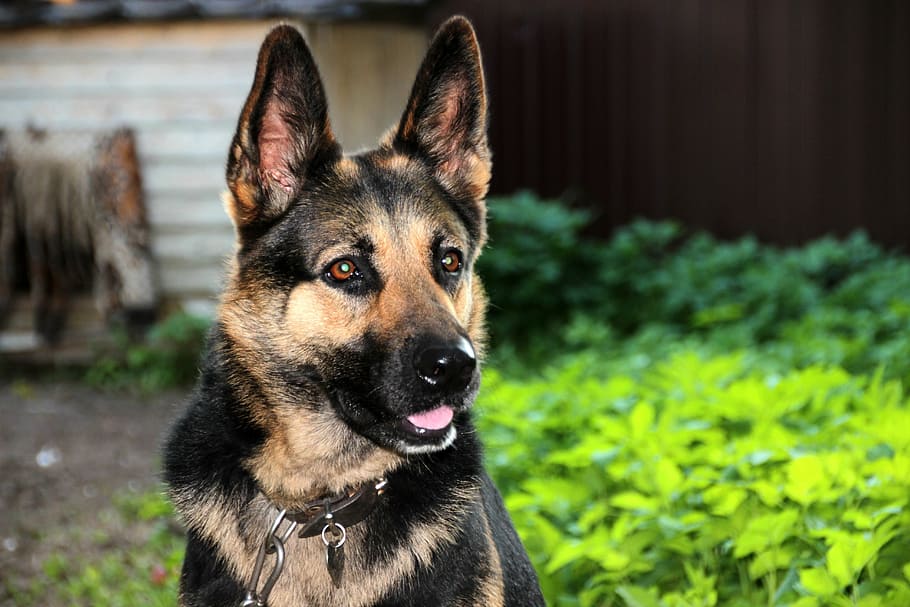

Physical appearance differences from other types
European Show Line German Shepherds have several physical appearance differences from other types of GSDs. For example, they tend to be larger than American Show Line German Shepherds. They also have a more sloping backline and a shorter muzzle.
One of the most noticeable differences is their coat colour. While American Show Line German Shepherds can come in a variety of colours including black, tan, and sable, European Show Line German Shepherds are typically black and red.
Another difference between working line and show line German Shepherds is their ear shape. While working line German Shepherds often have ears that stand up naturally without cropping or taping, show line German Shepherds typically have ears that are cropped and trained to stand upright.
Calm temperament compared to working lines
While European Show Line German Shepherds may not be bred specifically for working ability like their counterparts in the working line category, they still make excellent family pets due to their calm temperament.
Show that German Shepherds are typically more relaxed and less high-strung than working-line GSDs. They tend to be more laid-back and easygoing, making them great companions for families with children or other pets.
However, it’s important to note that all German Shepherds have their own unique personalities and temperaments. Even within the show line category, there can be variations in temperament from dog to dog.
American Show Lines: Comparison with West German Show Lines
German Shepherds are among the most popular breeds in the world, and they come in different types. The four primary types of German Shepherds include the West German Show Line, East German/DDR Working Line, West German Working Line, and American Show Line.
The history behind American show line breeding Practices
The history of the German Shepherd American shows line breeding practices dates back to the 1920s when Max von Stephanitz developed the breed standard for the GSD. However, in America, breeders focused more on aesthetics than working ability, leading to a distinct type of German Shepherd known as the American show line.
American breeders wanted a dog that was not only attractive but also obedient and well-behaved. As a result, they bred dogs that excelled in obedience training rather than those with strong working abilities. However, the german shepherd breed still remained popular among those who valued both obedience and working abilities.
Differences in physical appearance from West Germans
American show line GSDs have a distinct look compared to their West German counterparts. They have sloping backs and lower hindquarters than other GSD types. They tend to have darker coats with black markings instead of red or tan like their European counterparts.
On the other hand, West German show line GSDs have straighter backs and higher hindquarters. They also tend to have lighter coats with red or tan markings.
Emphasis on obedience training over working ability
As mentioned earlier, American show line breeders prioritize obedience training over working ability. This emphasis has led to a decline in working ability among these dogs, including the popular breed of German Shepherds.
In contrast, West Germans place more importance on working ability than obedience training when breeding GSDs. As such, their dogs excel at tasks such as herding livestock or serving as police K-9 units.
Czech Working Line German Shepherds: Traits and Characteristics
Czech German Shepherds, also known as Czech Working Line German Shepherds, are a type of working dog that has been bred specifically for their work ethic, high drive, and commitment to tasks.
Origin and History Behind Czech Working Line Breeding
Czech Working Line German Shepherds were first developed in former Czechoslovakia during the 1950s. The breeding program was established by the military with the goal of producing dogs that would excel in police work, search-and-rescue operations, border patrol duties, and other similar tasks.
The program was successful in creating a type of German Shepherd dog that had a high level of drive, intelligence, courage, trainability and loyalty. These traits made them ideal for working alongside humans in various roles.
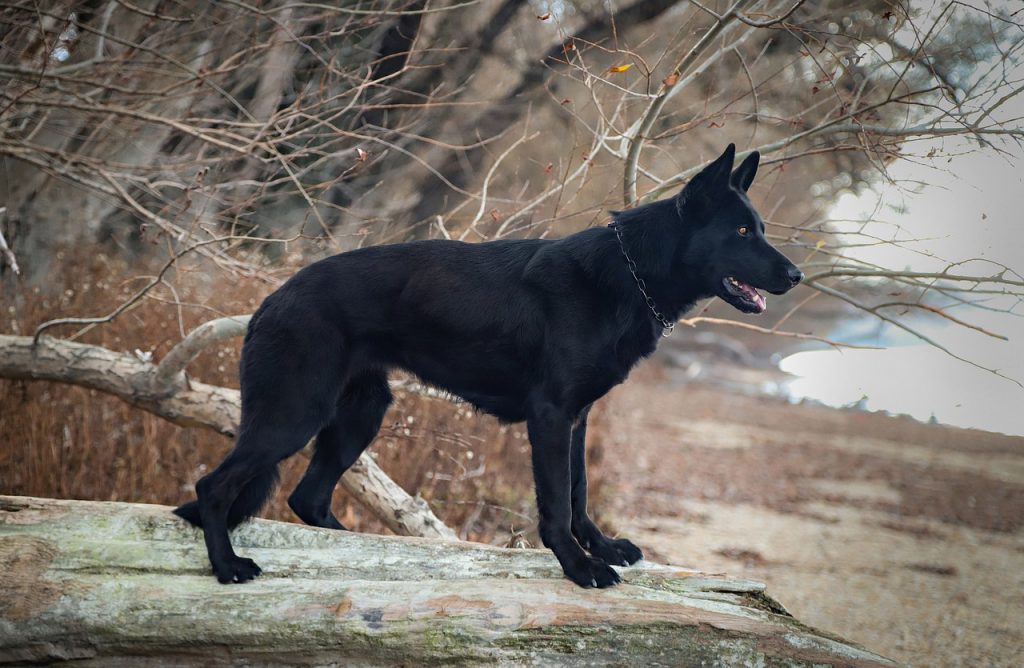

Physical Characteristics
Czech Working Line German Shepherds are typically medium-sized dogs with an athletic build. They have a muscular body with an elongated head shape. Their ears are usually erect or semi-erect, while their eyes are almond-shaped with dark pigmentation around them.
Their coat is short or medium-length with colours ranging from black to sable (a mixture of black hair tipped with brown). They have a double coat consisting of a thick undercoat covered by longer guard hairs which helps them adapt well to different weather conditions.
High Drive and Work Ethic Compared to Other Types
Czech Working Line German Shepherds are known for their high drive. They possess an intense desire to perform tasks assigned to them which makes them stand out from other types of GSDs.
They have been bred specifically for their ability to focus on tasks without getting distracted. This trait, combined with their high energy level, makes them ideal for working in law enforcement, search and rescue operations, and other similar tasks.
One of the unique traits that set Czech Working Line German Shepherds apart from other types is their dominant gene for work. They are highly committed to their tasks and will go above and beyond to ensure they complete them successfully.
Understanding the 5 Types of German Shepherds
In conclusion, understanding the different types of German Shepherds is crucial for anyone looking to own this breed. From the East German DDR Working Line to the Sable and Panda variations, each type has unique characteristics and traits that make them stand out.
It’s important to research and choose a type that fits your lifestyle and needs. Whether you’re looking for a loyal companion or a working dog, there is a type of German Shepherd that will suit you.
To ensure you’re getting a healthy and well-bred dog, it’s recommended to purchase from reputable breeders who prioritize the health and welfare of their animals.
Overall, owning a German Shepherd can be a rewarding experience if you choose the right type for you and provide proper care and training.
FAQs
Q: Are all types of German Shepherds good with children?
A: While German Shepherds are known to be great family dogs, each type may have different temperaments. It’s important to socialize with your dog from an early age and supervise interactions with children.
Q: Do all types of German Shepherds require extensive exercise?
A: Yes, all types of German Shepherds require regular exercise to maintain their physical and mental health. However, some types may have higher energy levels than others.
Q: Are certain types more prone to health issues than others?
A: Yes, some types may be more prone to certain health issues due to genetics or breeding practices. It’s important to research potential health concerns before choosing a specific type.
Q: Can I train any type of German Shepherd for protection work?
A: While all types have natural protective instincts, certain lines may be better suited for protection work due to their breeding history. It’s recommended to consult with experienced trainers before starting protection training.
Q: How do I know if I’m choosing a reputable breeder?
A: Look for breeders who prioritize the health and welfare of their dogs, provide proper socialization and training, and are transparent about their breeding practices. You can also ask for references or visit the breeder in person.


